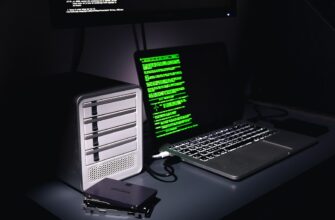🎮 Level Up with $RESOLV Airdrop!
💎 Grab your free $RESOLV tokens — no quests, just rewards!
🕹️ Register and claim within a month. It’s your bonus round!
🎯 No risk, just your shot at building crypto riches!
🎉 Early birds win the most — join the drop before it's game over!
🧩 Simple, fun, and potentially very profitable.
- Why Cold Storage is Non-Negotiable for Backup Funds
- Core Principles of Cold Storage Security
- 7 Best Practices for Backup Funds in Cold Storage
- 1. Select the Right Hardware Wallet
- 2. Generate Seeds Offline & Air-Gapped
- 3. Implement Multi-Location Backup Strategy
- 4. Apply Multi-Signature Protection
- 5. Conduct Bi-Annual Verification Checks
- 6. Maintain Operational OpSec
- 7. Establish Clear Recovery Protocols
- Critical Mistakes That Compromise Cold Storage
- Frequently Asked Questions
- How often should I check my cold storage backup?
- Can family members access my backup funds in emergencies?
- Is a bank safety deposit box secure for cold storage?
- What’s the biggest threat to cold storage funds?
- Should I use Shamir’s Secret Sharing for backups?
Why Cold Storage is Non-Negotiable for Backup Funds
In today’s digital landscape, securing backup funds isn’t optional—it’s critical. Cold storage (offline storage) provides an impenetrable barrier against hackers, malware, and online vulnerabilities. Unlike hot wallets connected to the internet, cold storage solutions like hardware wallets or paper wallets keep your emergency funds completely isolated. This guide details professional best practices to ensure your financial safety net remains uncompromised.
Core Principles of Cold Storage Security
Effective cold storage for backup funds relies on three pillars:
- Physical Isolation: Complete disconnection from internet-connected devices
- Redundancy: Multiple secure copies to prevent single-point failures
- Access Control: Strict protocols for authorized retrieval only during emergencies
7 Best Practices for Backup Funds in Cold Storage
1. Select the Right Hardware Wallet
Choose reputable brands like Ledger or Trezor with secure element chips. Verify authenticity directly from manufacturers to avoid tampered devices.
2. Generate Seeds Offline & Air-Gapped
Always create recovery seeds on devices never connected to the internet. Use built-in wallet generators rather than online tools.
3. Implement Multi-Location Backup Strategy
- Store 3-5 seed phrase copies in geographically separate locations
- Use fire/water-proof containers (e.g., Cryptosteel capsules)
- Never digitize seeds—paper or metal only
4. Apply Multi-Signature Protection
Require 2-3 physical signatures to access funds. Distribute signing devices among trusted parties in different households.
5. Conduct Bi-Annual Verification Checks
Every 6 months:
- Verify wallet functionality with minimal test transactions
- Inspect physical backups for environmental damage
- Update location records if relocation occurs
6. Maintain Operational OpSec
Never discuss storage locations or amounts. Use discreet labeling like “Family Archive #3” rather than “Bitcoin Backup”.
7. Establish Clear Recovery Protocols
Document step-by-step access instructions in sealed envelopes with trustees. Include:
- Wallet PINs
- Location coordinates
- Verification challenge phrases
Critical Mistakes That Compromise Cold Storage
- Cloud backups: Storing seed phrases in email or notes apps
- Single-location storage: All copies in one safe/vault
- Legacy tech reliance: Using outdated wallets without firmware updates
- Untested recovery: Never verifying access capability
Frequently Asked Questions
How often should I check my cold storage backup?
Verify functionality every 6 months without moving funds. Full recovery drills should occur every 2-3 years using test transactions.
Can family members access my backup funds in emergencies?
Only if you’ve established legal documentation and shared access protocols. Use multi-sig setups requiring multiple family members to collaborate for access.
Is a bank safety deposit box secure for cold storage?
Only as one component of a distributed strategy. Never store all backups in one institution. Combine with home safes and trusted contacts’ locations.
What’s the biggest threat to cold storage funds?
Human error—particularly poor seed management. Physical damage and inheritance planning failures rank next. Cyber threats are minimized through proper isolation.
Should I use Shamir’s Secret Sharing for backups?
Yes—for high-value holdings. It splits seeds into multiple shards, requiring only a subset (e.g., 3-of-5) for recovery, significantly enhancing security.
🎮 Level Up with $RESOLV Airdrop!
💎 Grab your free $RESOLV tokens — no quests, just rewards!
🕹️ Register and claim within a month. It’s your bonus round!
🎯 No risk, just your shot at building crypto riches!
🎉 Early birds win the most — join the drop before it's game over!
🧩 Simple, fun, and potentially very profitable.








